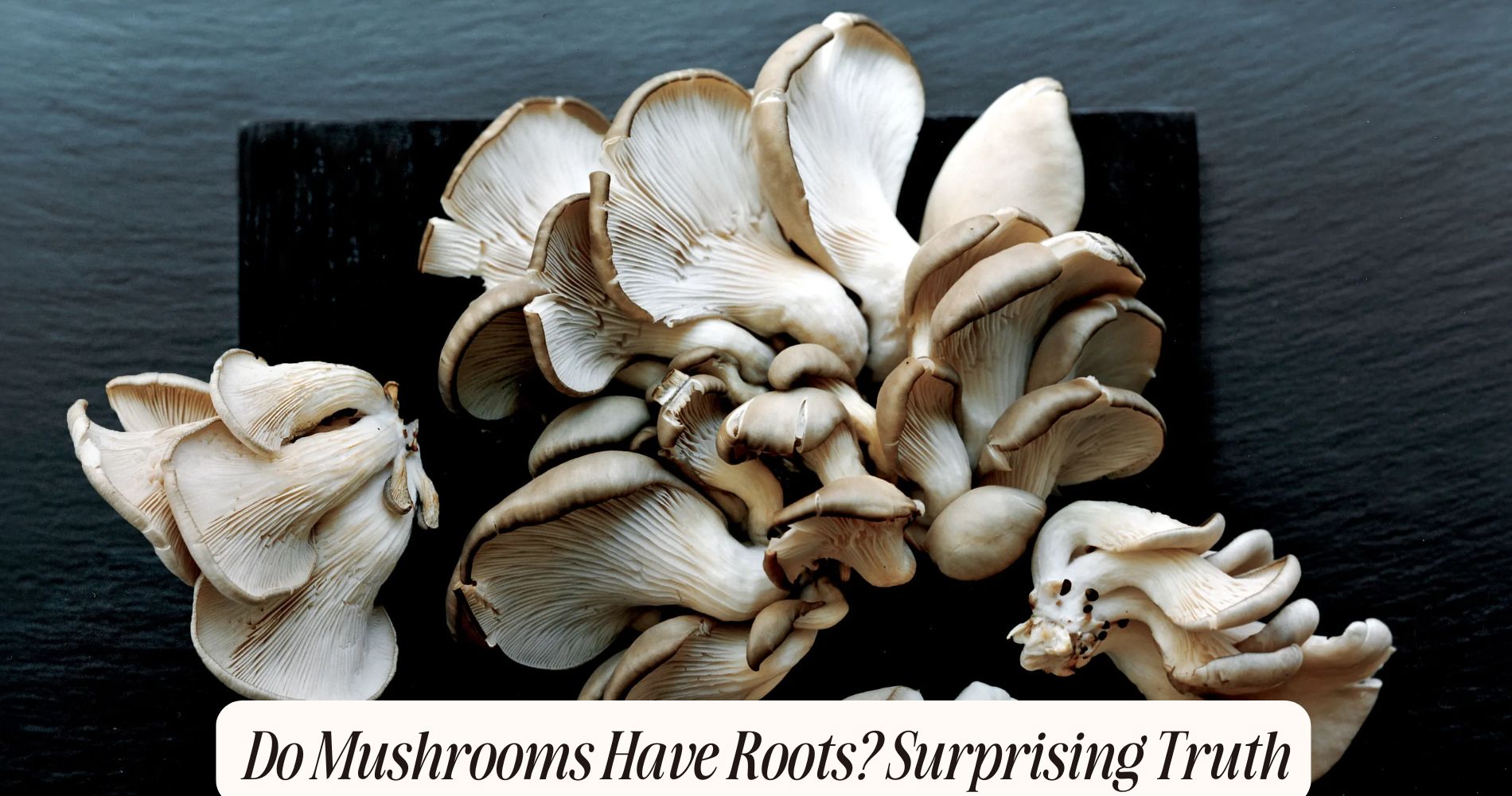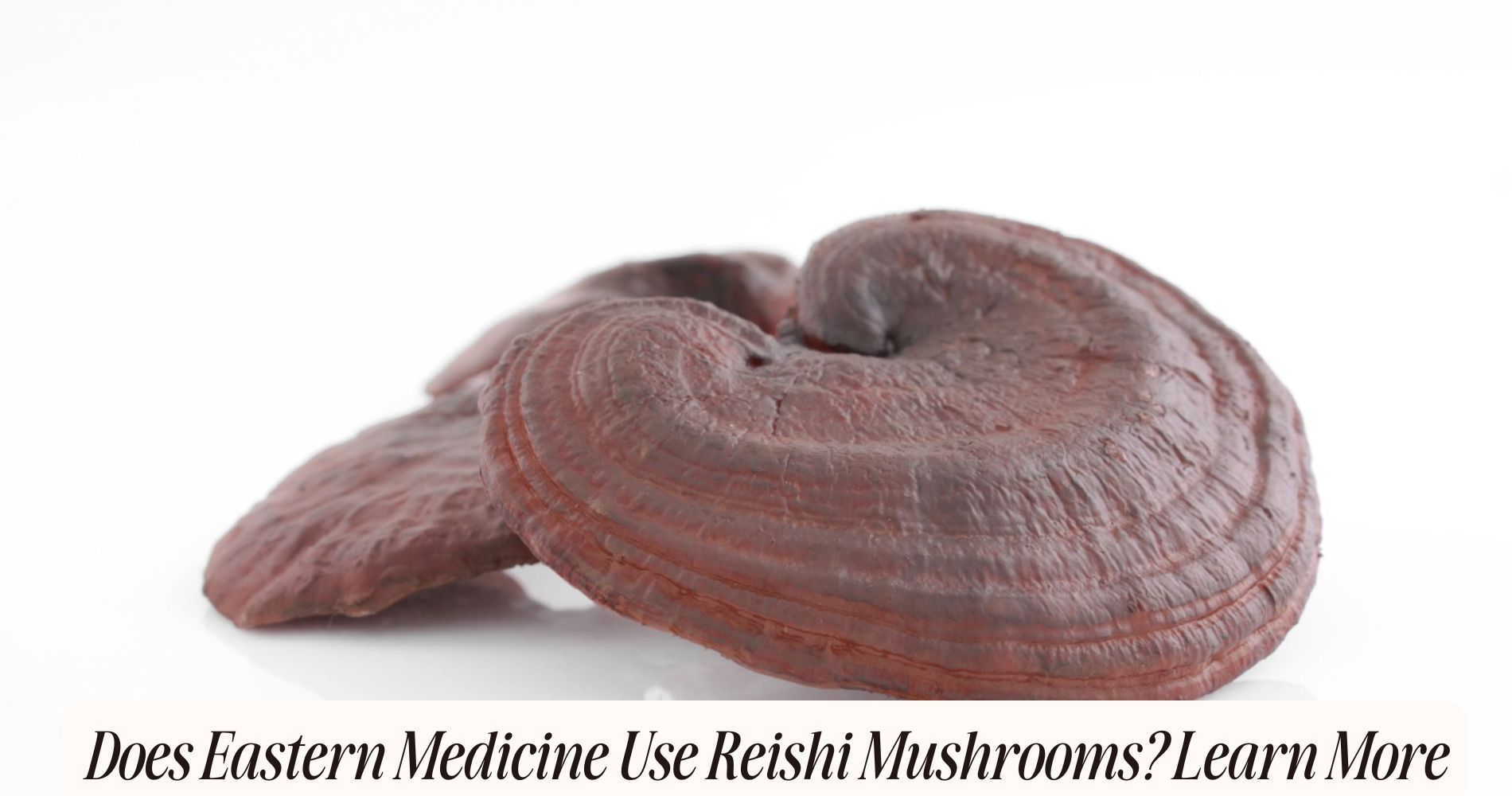
Do Mushrooms Have Roots? Surprising Truth
Do mushrooms have roots? Mushrooms don't have roots like plants do. Instead, they utilize a network called mycelium, which consists of branching hyphae. These structures absorb nutrients from their surroundings, breaking down organic matter through enzymatic action. Mycelium serves as both a nutrient exchanger and a natural decomposer, promoting healthy soil and facilitating communication among organisms. This unique system allows fungi to thrive in various habitats. Understanding this differs from traditional root structures is essential for grasping fungi's ecological roles. You'll find more intriguing aspects of fungi and their functions in the ecosystem as you explore further.
Understanding Fungi and Their Structure
Fungi, including mushrooms, exhibit a unique structure that distinguishes them from plants and animals. Unlike plants, fungi don't possess roots; instead, they rely on a network of hyphae to absorb nutrients from the environment. This structure facilitates fungal reproduction, primarily through spore dispersal, allowing them to colonize various ecological niches.
You'll find that fungi thrive in diverse habitats, from decaying organic matter to symbiotic relationships with plants, such as mycorrhizae, where they enhance nutrient uptake for their hosts.

Fungal diversity is vast, encompassing thousands of species with specialized adaptations that enable them to survive in specific conditions. These adaptations include variations in spore production and modes of nutrient absorption.
By participating in the decomposition process, fungi play a vital role in nutrient cycling, breaking down complex organic materials into simpler forms that other organisms can utilize. Understanding these structural and functional characteristics of fungi deepens your appreciation for their ecological importance.
Recognizing their habitat preferences and symbiotic interactions further emphasizes their role in maintaining ecosystem balance, highlighting the intricate web of life that fungi support.
What Is Mycelium?
Mycelium is the intricate network of hyphae that forms the vegetative part of fungi, playing an essential role in their growth and nutrient absorption. This filamentous structure consists of numerous branching threads, allowing fungi to efficiently penetrate substrates and extract critical nutrients.
Mycelium functions as a natural decomposer, breaking down complex organic matter, such as dead plants and animals, into simpler compounds that can be assimilated by other organisms.
Through its extensive surface area, mycelium enhances the fungi's ability to absorb water and nutrients, making it essential for their survival. Additionally, mycelium forms symbiotic relationships with plant roots, known as mycorrhizae, which greatly improves nutrient uptake, particularly phosphorus, for both fungi and plants.
The benefits of mycelium extend beyond individual fungi; it contributes to soil health, promotes biodiversity, and aids in carbon cycling. By stabilizing soil structure and enhancing its moisture retention, mycelium supports various ecosystems.
Mycelium Vs. Roots
The comparison between mycelium and roots reveals fundamental differences in structure and function within ecosystems. Mycelium, the vegetative part of fungi, consists of a network of thread-like structures called hyphae. These hyphae form extensive fungal networks that facilitate communication and nutrient exchange between organisms.
In contrast, roots are specialized structures in vascular plants designed primarily for anchorage and nutrient uptake from the soil.
When examining mushroom anatomy, you'll notice that mycelium plays a significant role in the life cycle of fungi. It not only supports the mushroom's development but also allows for efficient decomposition of organic matter, enhancing soil health.
Roots, on the other hand, typically consist of epidermal, cortical, and vascular tissues, all of which contribute to their ability to absorb water and nutrients.
While both mycelium and roots serve essential roles in nutrient cycling, they operate in different ways. Mycelium connects various plants and organisms, forming a symbiotic relationship that contributes to ecosystem resilience.
Roots are more localized, focusing on individual plant survival. Understanding these differences underscores the unique contributions of fungi and plants to our environment.
Nutrient Absorption in Mushrooms
Understanding how mushrooms absorb nutrients is key to grasping their role in ecosystems. Unlike traditional plants, mushrooms utilize a mycelial network to extract nutrients from their surroundings. This network consists of hyphae, fine filamentous structures that penetrate organic matter, breaking it down through enzymatic action. As a result, mushrooms can access complex compounds like cellulose and lignin, facilitating nutrient cycling within their environment.

In the context of fungal symbiosis, mushrooms often form mutualistic relationships with plants, known as mycorrhizae. Through this relationship, fungi exchange essential nutrients, such as phosphorus and nitrogen, with plant roots. In return, plants provide carbohydrates produced through photosynthesis, establishing a beneficial cycle. This interaction enhances nutrient availability in the soil, promoting plant health and growth.
Moreover, mushrooms play a crucial role in decomposing organic matter, further contributing to nutrient cycling. As they break down dead plant and animal material, they release nutrients back into the ecosystem, enriching the soil and fostering biodiversity.
Role of Mycelium in Ecosystems
In the intricate web of ecosystems, mycelium serves as an indispensable connective tissue, facilitating nutrient exchange and communication between various organisms. These mycelial networks function as ecosystem engineers, shaping the environment and promoting symbiotic relationships with plants and other microorganisms.
By forming partnerships with roots, mycelium enhances the soil microbiome, leading to improved nutrient cycling and increased availability of crucial minerals.
The role of mycelium extends to fungal decomposition, where it breaks down organic matter, releasing nutrients back into the soil. This process not only supports biodiversity but also contributes to habitat creation for numerous organisms.
In addition, mycelium plays a significant role in carbon storage, sequestering carbon within the soil, which is essential for combating climate change.
Types of Mushrooms and Mycelium
To understand the relationship between mushrooms and mycelium, you need to examine the structure of mycelium, which acts as the root network of fungi.
You'll also encounter various mushroom varieties that exhibit unique characteristics and ecological roles.
Additionally, it's vital to analyze how fungi efficiently absorb nutrients through this extensive mycelial network.
Mycelium Structure Explained
Mushrooms, fascinating organisms in their own right, are just the visible fruiting bodies of a more extensive and intricate network known as mycelium. This mycelium comprises a vast array of thread-like structures called hyphae, which collectively form mycelium networks. These networks play a significant role in nutrient absorption and environmental interaction.
As you explore deeper into mycelium structure, you'll discover that hyphae can vary in morphology, branching patterns, and density, which impacts their efficiency in nutrient uptake. The interconnectedness of these hyphae allows for remarkable fungal communication, enabling different mushroom species to share resources and information. Through chemical signals, fungi can alert one another to environmental changes or threats, enhancing survival rates.
Moreover, the mycelium serves as an essential decomposer in ecosystems, breaking down organic matter and recycling nutrients back into the soil. This process not only supports plant life but also fosters biodiversity.
Understanding the complexities of mycelium networks reveals the hidden life of fungi and their indispensable role in maintaining ecological balance. So, next time you see a mushroom, remember it's just the tip of an extensive, fascinating underground network.
Common Mushroom Varieties
Various mushroom varieties contribute uniquely to ecosystems, each with specific characteristics and mycelial structures that enhance their adaptability and survival.
Edible varieties, such as Agaricus bisporus (common button mushroom) and Pleurotus ostreatus (oyster mushroom), are prized for their culinary uses. Their diverse flavor profiles and nutritional benefits make them staples in many dishes.

In contrast, medicinal mushrooms like Ganoderma lucidum (reishi) are celebrated for their health-promoting properties, commonly utilized in supplements and traditional medicine. Understanding their cultivation techniques is essential for maximizing yield and potency.
However, it's important to recognize poisonous species, such as Amanita phalloides (death cap), which pose severe health risks. Wild foraging can yield an array of edible mushrooms, but proper identification is crucial to avoid potentially toxic varieties.
The mycelial structures of these mushrooms also play a key role in their ecological niches, aiding in nutrient cycling and establishing symbiotic relationships with plants.
Fungi's Nutrient Absorption
How do fungi effectively absorb nutrients from their environment? Fungi utilize mycelium, a network of hyphae, to maximize nutrient uptake. This extensive structure allows them to break down organic matter, playing an essential decomposer role in nutrient cycling.
Fungi engage in microbial interactions, forming symbiotic relationships with plants through mycorrhizae, which enhances nutrient exchange. In this fungal symbiosis, fungi assist in acquiring water and important minerals, while plants provide carbohydrates in return.
Moreover, fungi contribute to ecosystem services by improving soil structure and fertility. By breaking down complex organic compounds in soil amendments, they release nutrients that become available for plant uptake. The presence of fungi in the soil microbiome fosters a diverse ecosystem, promoting healthy plant growth and resilience against pathogens.
Fungi's ability to absorb and cycle nutrients is critical for maintaining soil health. They not only enhance nutrient availability but also stabilize soil organic matter, ensuring long-term fertility.
Understanding these processes emphasizes the importance of preserving fungal networks for sustainable agriculture and ecosystem stability. In conclusion, fungi play an indispensable role in nutrient absorption and cycling, underscoring their significance in our environment.
Growth Patterns of Fungi
In the complex ecosystem of fungi, growth patterns reveal a fascinating interplay between environmental factors and biological processes. You'll notice that fungal diversity markedly influences how different species adapt to their surroundings.
For instance, soil composition plays a vital role in determining habitat preferences, as certain fungi thrive in nutrient-rich environments while others prefer more acidic or alkaline soils.
Fungal reproduction is another essential aspect of growth patterns, as it dictates how quickly fungi can colonize new areas. Environmental impacts, such as temperature and moisture levels, directly affect the rates of spore germination and mycelial growth.
You might also find that genetic variations within fungal populations lead to different responses to these conditions, enhancing their survival through specific adaptations.
Additionally, the symbiotic partnerships fungi form with plants and other organisms influence their growth. These ecological interactions often facilitate nutrient exchange, promoting mutual benefits.
In mushroom cultivation, understanding these growth patterns is fundamental for optimizing yield and quality. By studying these dynamics, you can appreciate the intricate relationships that shape the life cycles of fungi and their vital roles in ecosystems.
Myths About Mushrooms
Debunking myths about mushrooms reveals a world rife with misconceptions that can mislead both casual foragers and mycology enthusiasts alike. One prevalent mushroom misconception is that all mushrooms are edible. While some are indeed safe, others can be highly toxic or even lethal. This highlights the importance of proper identification, as relying solely on fungal folklore can lead to dangerous consequences.
Another common myth is that mushrooms have roots similar to plants. In reality, mushrooms are the fruiting bodies of fungi, which absorb nutrients through a network of mycelium—an underground filamentous structure.

Additionally, some believe that mushrooms grow from dirt or soil, when in fact, they thrive on decaying organic matter, making them essential decomposers in ecosystems.
People often assume that mushrooms are a sign of unhealthy soil, yet their presence can indicate a thriving ecosystem. Misunderstandings like these not only perpetuate mushroom misconceptions but can also affect conservation efforts and sustainable foraging practices.
Implications for Gardening and Agriculture
Understanding mycorrhizal relationships can greatly enhance your gardening and agricultural practices.
These symbiotic connections between fungi and plant roots improve nutrient uptake, promoting soil health and crop yields.
Mycorrhizal Relationships Explained
Mushrooms, often overlooked in the garden ecosystem, play an essential role in forming mycorrhizal relationships with plants. These symbiotic partnerships enhance nutrient uptake, particularly phosphorus, which is fundamental for plant growth.
When fungi colonize plant roots, they create extensive fungal networks that interconnect with multiple plants, allowing for efficient nutrient exchange. This interconnectedness not only benefits individual plants but also strengthens the entire ecosystem.
In these mycorrhizal relationships, the plant provides carbohydrates to the fungi, while the fungi supply essential nutrients and water in return. This mutualistic exchange is critical for healthy plant development, especially in nutrient-poor soils.
By fostering these fungal networks, you can improve plant resilience against pests and diseases, ultimately leading to increased crop yields.
As a gardener or farmer, understanding these relationships can guide your cultivation practices. Incorporating organic matter, like compost, can enhance fungal activity in the soil, promoting these beneficial partnerships.
Instead of relying solely on chemical fertilizers, consider methods that support mycorrhizal fungi, ensuring a thriving garden ecosystem that optimizes plant health and productivity.
Soil Health Benefits
A healthy soil ecosystem is essential for successful gardening and agriculture, as it directly influences plant growth, nutrient availability, and overall productivity. Soil microbes play a significant role in this ecosystem, acting as decomposers that break down organic matter. This process not only releases nutrients but also improves soil structure, enhancing aeration and water retention.
By fostering a diverse microbial community, you can promote a more resilient soil environment that supports healthy plant development. Incorporating organic matter, such as compost, enhances microbial activity, leading to a synergistic relationship that benefits both plants and soil. When you add organic matter, you increase nutrient cycling and support the establishment of beneficial fungi, including mycorrhizae. These fungi extend root systems, helping plants access otherwise unavailable nutrients.
Moreover, healthy soil reduces erosion and improves carbon sequestration, which is essential for mitigating climate change effects. By prioritizing soil health through the integration of soil microbes and organic matter, you lay the groundwork for sustainable gardening and agricultural practices.
Ultimately, focusing on these soil health benefits can lead to increased yields, improved plant vitality, and a more sustainable approach to land management.
Companion Planting Strategies
Companion planting strategies can greatly enhance the productivity and health of your garden or agricultural plot. By strategically selecting plant pairings, you can promote plant synergy, where certain species support each other's growth, leading to significant growth enhancement. For instance, planting basil alongside tomatoes can improve flavors and deter pests. This method not only bolsters pest control but also enhances garden diversity, creating a more resilient ecosystem.
Incorporating companion planting into your routine can also facilitate soil enhancement. Certain plants, like legumes, fix nitrogen in the soil, enriching it for subsequent crops. This practice ties into effective crop rotation strategies, allowing you to maintain soil fertility over time while maximizing biodiversity benefits.
Moreover, companion planting can reduce reliance on chemical pesticides, fostering a healthier environment. By promoting natural predator-prey relationships, you can effectively manage pest populations.
As you explore companion planting, you'll discover how these strategies create a sustainable agricultural practice that encourages biodiversity while improving overall yields. Ultimately, implementing these techniques won't only elevate your gardening success but also contribute positively to the ecosystem.
Frequently Asked Questions
Can Mushrooms Survive Without Mycelium?
Mushrooms can't survive without mycelium, as mycelium performs essential functions like nutrient absorption and water retention. Their survival strategies heavily rely on mycelium to establish connections with the environment, ensuring nutrient availability and overall growth.
Do All Fungi Have Mycelium?
Not all fungi possess mycelial structure, but most do. These networks allow nutrient absorption and communication. Understanding this diversity in fungal networks reveals their ecological roles, showcasing their significance in various environments and ecosystems.
How Do Mushrooms Reproduce?
Mushrooms reproduce through spore dispersal, a key phase in the fungal life cycle. You'll find spores released into the environment, germinating under suitable conditions, leading to new mycelium growth and continued propagation of the species.
Are Mushrooms Considered Plants or Animals?
You'll find mushrooms aren't classified as plants or animals; they belong to fungi. Their unique fungal characteristics, such as chitin in cell walls and spore-based reproduction, distinguish them from traditional plant and animal classifications.
Can Mycelium Be Used in Bioremediation?
Yes, mycelium can effectively be used in bioremediation. Its benefits include breaking down pollutants and improving soil health, showcasing significant environmental applications. By harnessing mycelium, you contribute to sustainable practices and ecological restoration efforts.
Conclusion
To sum up, while mushrooms don't have roots like plants, their mycelium serves a similar purpose by anchoring them and facilitating nutrient absorption. Understanding this unique structure reveals the crucial role fungi play in ecosystems, aiding in decomposition and nutrient cycling. By debunking myths surrounding mushrooms, you can appreciate their complex biology and potential benefits in gardening and agriculture. Embracing this knowledge may enhance your approach to cultivating healthier plants and fostering a thriving environment.




